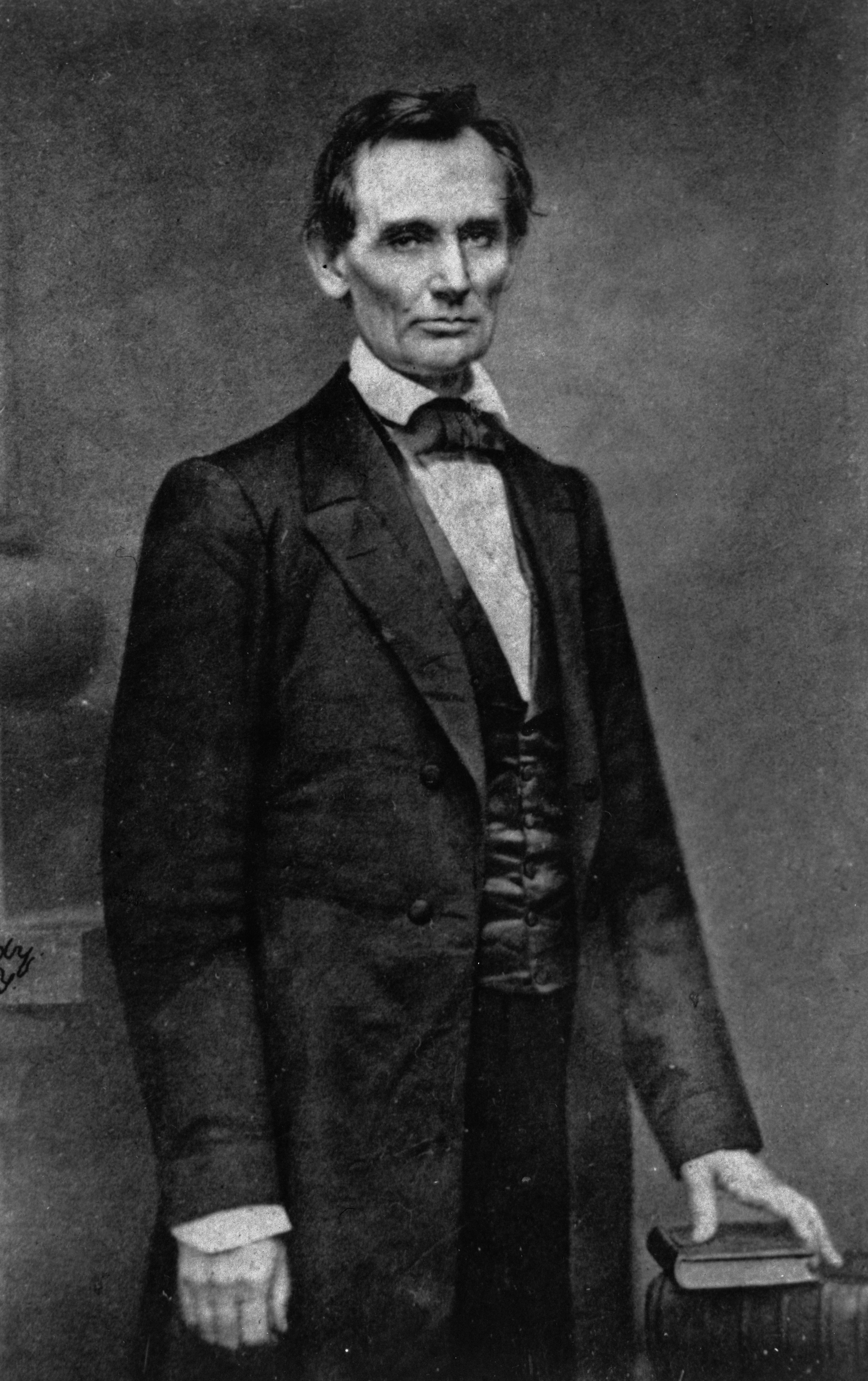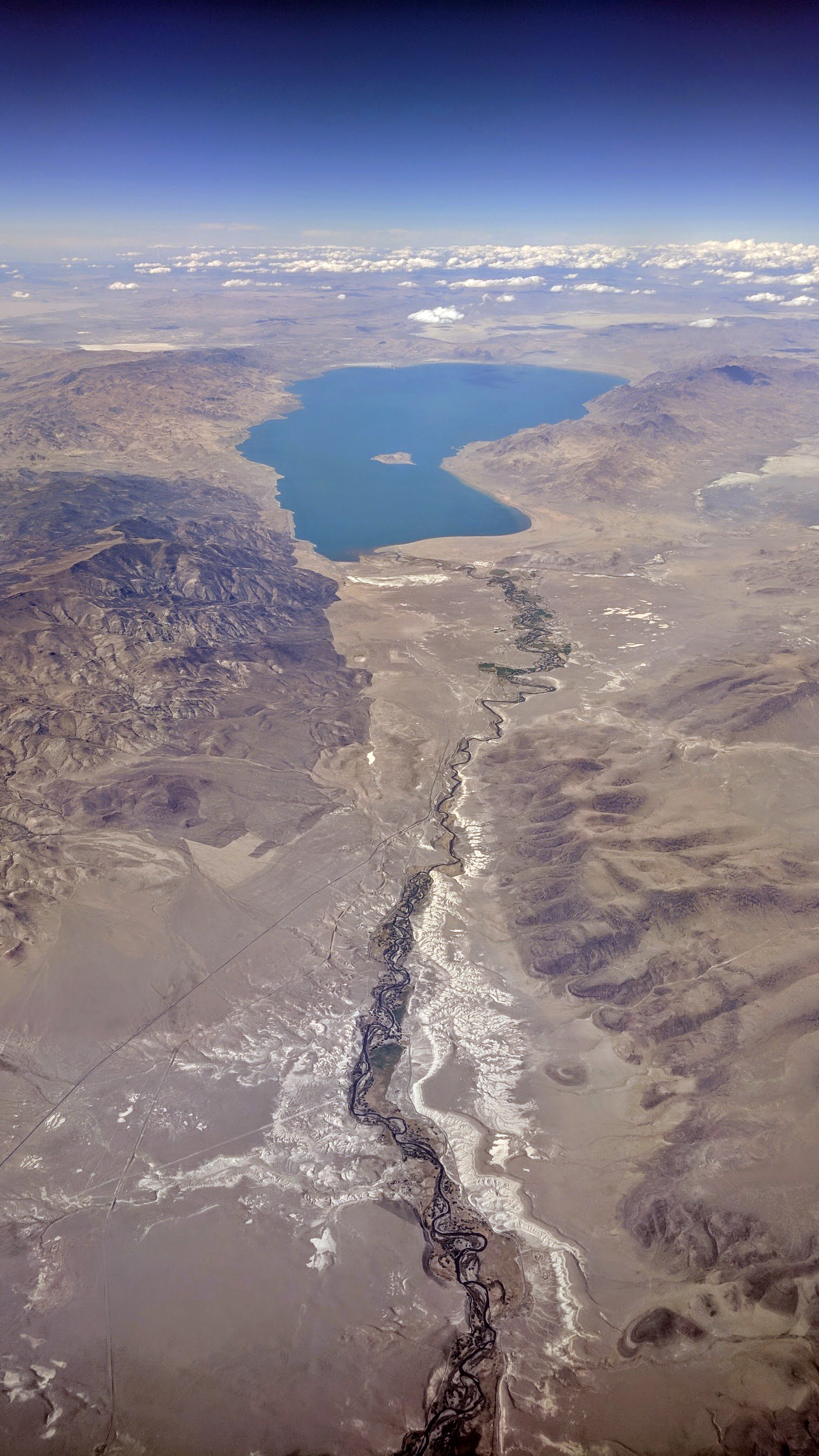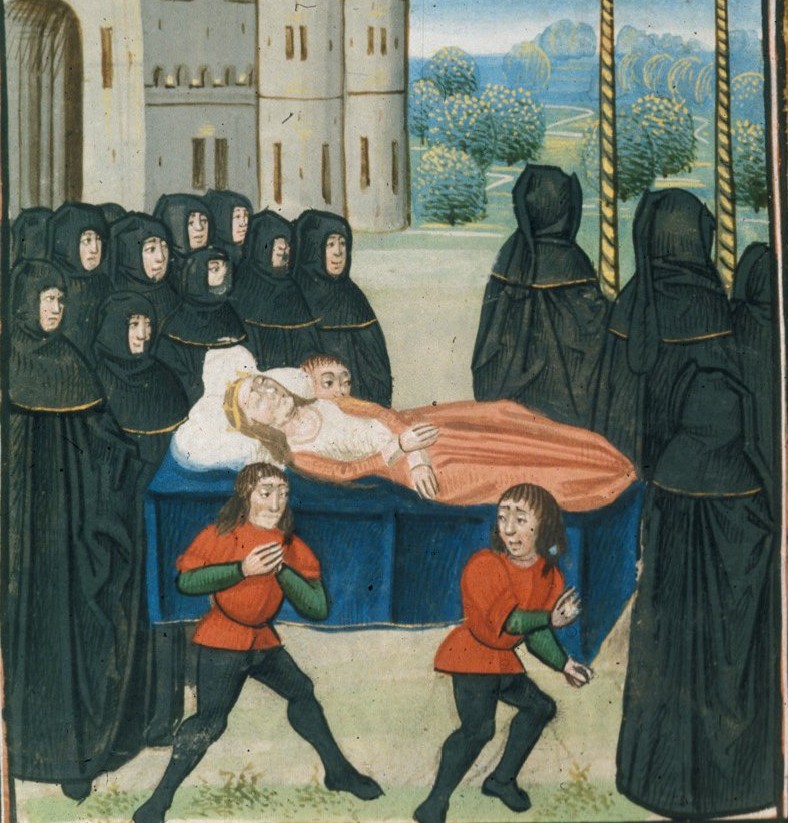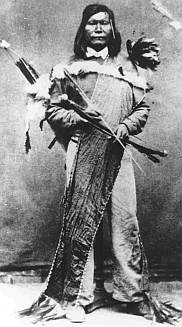|
First Battle Of Pyramid Lake
The First Battle of Pyramid Lake in 1860 was one of the opening conflicts of the Paiute War in Nevada between the American people and the Northern Paiute, Paiute people, who had resisted the increasing numbers of migrants who traveled the California Trail through their territory, taking scarce game and water resources, as well as altercations with the Pony Express. Background In 1859, the news broke that silver had been found in the huge Comstock Lode in Washoe, a region that was then in the western part of Utah Territory, and that would soon become the territory of Nevada. Hordes of miners flooded to the mining center of Virginia City, near to Carson City. They cut down pinyon trees to make fuel for ore-processing, destroying the pine-nut orchards that were essential to the Paiute food economy. Hunters and trappers took big game, fish, and waterfowl to feed the miners. Ranchers moved into the fertile valleys, cutting off access to places where nuts, roots, and seeds could be g ... [...More Info...] [...Related Items...] OR: [Wikipedia] [Google] [Baidu] |
Paiute War
Paiute (; also Piute) refers to three non-contiguous groups of indigenous peoples of the Great Basin. Although their languages are related within the Numic languages, Numic group of Uto-Aztecan languages, these three groups do not form a single set. The term "Paiute" does not refer to a single, unique, unified group of Great Basin tribes, but is a historical label comprising: * Northern Paiute people of northeastern California, northwestern Nevada, eastern Oregon, and southern Idaho * Southern Paiute people of northern Arizona, southern Nevada, and southwestern Utah * Mono people of east central California, divided into Owens Valley Paiute (Eastern Mono) and Western Mono (Monache) {{Authority control Paiute, ... [...More Info...] [...Related Items...] OR: [Wikipedia] [Google] [Baidu] |
Lake Lahontan
Lake Lahontan was a large endorheic Pleistocene lake of modern northwestern Nevada that extended into northeastern California and southern Oregon. The area of the former lake is a large portion of the Great Basin that borders the Sacramento River watershed to the west. The lake was named by Clarence King during the Geological Exploration of the Fortieth Parallel. The name honors Louis-Armand de Lom d'Arce de Lahontan, Baron de Lahontan, a French soldier and explorer. History At its peak approximately 12,700 years ago (during a period known as the Sehoo Highstand), the lake had a surface area of over , with its largest component centered at the location of the present Carson Sink. The depth of the lake was about at present day Pyramid Lake, and at the Black Rock Desert. Lake Lahontan, during this most recent glacial period, would have been one of the largest lakes in North America. Climate change around the end of the Pleistocene epoch led to a gradual desiccation of anc ... [...More Info...] [...Related Items...] OR: [Wikipedia] [Google] [Baidu] |
Conflicts In 1860
Conflict may refer to: Arts, entertainment, and media Films * ''Conflict'' (1921 film), an American silent film directed by Stuart Paton * ''Conflict'' (1936 film), an American boxing film starring John Wayne * ''Conflict'' (1937 film), a Swedish drama film directed by Per-Axel Branner * ''Conflict'' (1938 film), a French drama film directed by Léonide Moguy * ''Conflict'' (1945 film), an American suspense film starring Humphrey Bogart * ''Catholics: A Fable'' (1973 film), or ''The Conflict'', a film starring Martin Sheen * ''Judith'' (1966 film) or ''Conflict'', a film starring Sophia Loren * ''Samar'' (1999 film) or ''Conflict'', a 1999 Indian film by Shyam Benegal Games * ''Conflict'' (series), a 2002–2008 series of war games for the PS2, Xbox, and PC * ''Conflict'' (video game), a 1989 Nintendo Entertainment System war game * '' Conflict: Middle East Political Simulator'', a 1990 strategy computer game Literature and periodicals * ''Conflict'' (novel) ... [...More Info...] [...Related Items...] OR: [Wikipedia] [Google] [Baidu] |
Battles Involving Native Americans
A battle is an occurrence of combat in warfare between opposing military units of any number or size. A war usually consists of multiple battles. In general, a battle is a military engagement that is well defined in duration, area, and force commitment. An engagement with only limited commitment between the forces and without decisive results is sometimes called a skirmish. The word "battle" can also be used infrequently to refer to an entire operational campaign, although this usage greatly diverges from its conventional or customary meaning. Generally, the word "battle" is used for such campaigns if referring to a protracted combat encounter in which either one or both of the combatants had the same methods, resources, and strategic objectives throughout the encounter. Some prominent examples of this would be the Battle of the Atlantic, Battle of Britain, and Battle of Stalingrad, all in World War II. Wars and military campaigns are guided by military strategy, whereas bat ... [...More Info...] [...Related Items...] OR: [Wikipedia] [Google] [Baidu] |
1860 In The United States
Events from the year 1860 in the United States. Incumbents Federal Government * President: James Buchanan ( D-Pennsylvania) * Vice President: John C. Breckinridge ( D-Kentucky) * Chief Justice: Roger B. Taney (Maryland) * Speaker of the House of Representatives: William Pennington ( R-New Jersey) * Congress: 36th Events January–March * January 10 – The Pemberton Mill collapses in Lawrence, Massachusetts, killing 145 workers. * February 22 – The New England Shoemakers Strike of 1860 begins in Lynn, Massachusetts. The strike spreads throughout New England, and eventually involves 20,000 workers. * February 26 – 1860 Wiyot Massacre: 80 to 250 Wiyot people are killed on Indian Island, near Eureka, California. * February 27 – Abraham Lincoln gives his Cooper Union speech. * March 6 – While campaigning for the presidency, Abraham Lincoln makes a speech defending the right to strike. * March 9 – The first Japanese ambassadors to the ... [...More Info...] [...Related Items...] OR: [Wikipedia] [Google] [Baidu] |
Second Battle Of Pyramid Lake
The Second Battle of Pyramid Lake (also known as the Battle of Truckee River) took place in response to the U.S. defeat at the First Battle of Pyramid Lake. A well-organized force of militia and regulars, under the capable leadership of famed Texas Ranger Col. John C. "Jack" Hays, defeated the Paiute warriors under Chief Numaga. This was the final engagement of the Pyramid Lake War of 1860. Background On May 6, 1860, a band of Paiutes raided Williams Station along the Carson River, near present-day Silver Springs, Nevada, killing three white settlers at the station. In response, Major William Ormsby led a group of vigilantes from Carson City and Virginia City against the Paiutes near Pyramid Lake. The vigilante force was ingloriously defeated and Ormsby was killed. This defeat prompted local settlers to send a call for help to nearby California. Prelude Colonel John C. Hays responded to the call and traveled to Carson City to organize a regiment of 500 volunteers, whom he ... [...More Info...] [...Related Items...] OR: [Wikipedia] [Google] [Baidu] |
John C
John is a common English name and surname: * John (given name) * John (surname) John may also refer to: New Testament Works * Gospel of John, a title often shortened to John * First Epistle of John, often shortened to 1 John * Second Epistle of John, often shortened to 2 John * Third Epistle of John, often shortened to 3 John People * John the Baptist (died c. AD 30), regarded as a prophet and the forerunner of Jesus Christ * John the Apostle (lived c. AD 30), one of the twelve apostles of Jesus * John the Evangelist, assigned author of the Fourth Gospel, once identified with the Apostle * John of Patmos, also known as John the Divine or John the Revelator, the author of the Book of Revelation, once identified with the Apostle * John the Presbyter, a figure either identified with or distinguished from the Apostle, the Evangelist and John of Patmos Other people with the given name Religious figures * John, father of Andrew the Apostle and Saint Peter * Pope Jo ... [...More Info...] [...Related Items...] OR: [Wikipedia] [Google] [Baidu] |
Truckee River
The Truckee River is a river in the U.S. states of California and Nevada. The river flows northeasterly and is long.U.S. Geological Survey. National Hydrography Dataset high-resolution flowline dataThe National Map accessed October 20, 2012 The Truckee is the sole outlet of Lake Tahoe and drains part of the high Sierra Nevada, emptying into Pyramid Lake in the Great Basin. Its waters are an important source of irrigation along its valley and adjacent valleys. Naming of the river When John C. Frémont and Kit Carson ascended the Truckee River on January 16, 1844, they called it the Salmon Trout River, after the huge Lahontan cutthroat trout (''Oncorhynchus clarki henshawi'') that ran up the river from Pyramid Lake to spawn. However, the river was ultimately named after a Paiute chief known as Truckee, who in 1844 guided an emigrant party from the headwaters of the Humboldt River to California via the Truckee River, Donner Lake, and Donner Pass. Appreciative of their Native Amer ... [...More Info...] [...Related Items...] OR: [Wikipedia] [Google] [Baidu] |
Christian Burial
A Christian burial is the burial of a deceased person with specifically Christian rites; typically, in consecrated ground. Until recent times Christians generally objected to cremation because it interfered with the concept of the resurrection of a corpse, and practiced inhumation almost exclusively. Today this opposition has all but vanished among Protestants and Catholics alike, and this is rapidly becoming more common, although Eastern Orthodox Churches still mostly forbid cremation. History and antecedents of Christian burial rites Early historical evidence The Greeks and Romans practiced both burial and cremation, with Roman funerary practices distinctly favoring cremation by the time Christianity arose during the Principate. However, the Jews only ever buried their dead. Even God himself is depicted in the Torah as performing burial: "And odburied him (Moses) in the depression in the land of Moab, opposite Beth Peor. No man knows the place that he was buried, even to thi ... [...More Info...] [...Related Items...] OR: [Wikipedia] [Google] [Baidu] |
Sarah Winnemucca
Sarah Winnemucca Hopkins ( – October 17, 1891) was a Northern Paiute author, activist (lecturer) and educator (school organizer). Her maiden name is Winnemucca. Her Northern Paiute language, Northern Paiute name was Thocmentony, also spelled Tocmetone, which translates as "Chelone (plant), Shell Flower. Sarah Winnemucca was born near Humboldt Lake, Nevada, into an influential Northern Paiute family who led their community in pursuing friendly relations with the arriving groups of Anglo-American settlers. She is the daughter of Chief Winnemucca of the Paiute nation and the granddaughter of Chief Truckee. At 16, Sarah studied at a Catholic school in San Jose, California. When the Paiute War erupted between the Pyramid Lake Paiute and the settlers, including some who were friends of the Winnemucca family, Sarah and some of her family traveled to San Francisco and Virginia City to escape the fighting. They made a living performing onstage as "A Paiute Royal Family." In 1865, while ... [...More Info...] [...Related Items...] OR: [Wikipedia] [Google] [Baidu] |
Chief Truckee
Truckee (died 1860), also known as Captain Truckee, Wuna Mucca,Ontko, Gale. Thunder Over the Ochoco, Volume II: Distant Thunder. Bend, OR: Maverick Publications, Inc., Fourth Printing. 1997. The Giver of Spiritual Gifts, Old Winnemucca, One Moccasin, ''Onennamucca'', ''One-ah-mucca''), or Old Chief Winnemucca, was a medicine chief of the Northern Paiute people and an influential prophet. How he gained the name Truckee is up for debate as different accounts credit different people/groups with giving Winnemucca the nickname. Chief Truckee led his people through a rapidly changing time in California history while also becoming one of the most respected chiefs both by his people and to an extent by the settlers who he often aided. For simplicity he will be referred to as Truckee or Old Winnemucca for the rest of the Article. Family life Old Winnemucca was born a Shoshoni and became a Paiute by marrying a Kuyuidika woman. He was the father of Tuboitonie and father-in-law to her husband ... [...More Info...] [...Related Items...] OR: [Wikipedia] [Google] [Baidu] |





